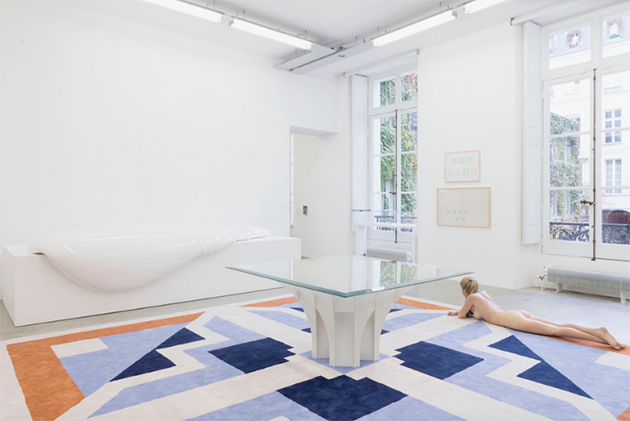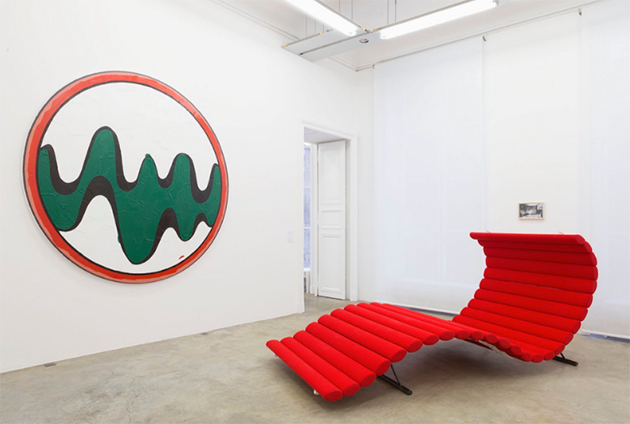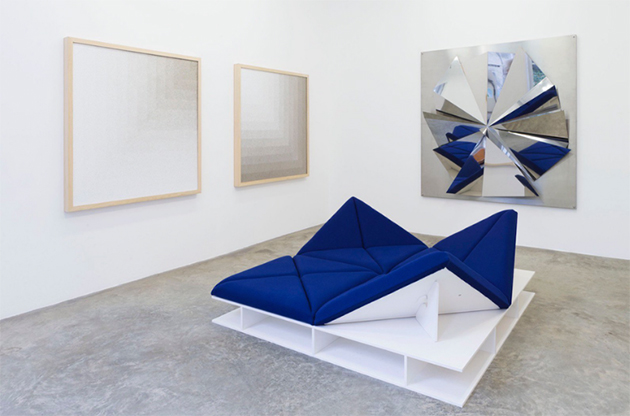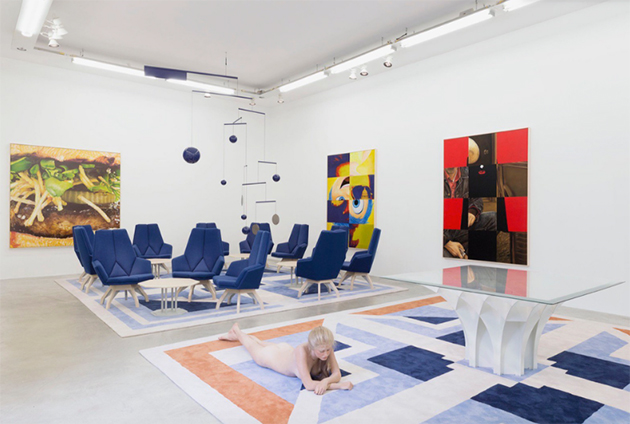
One of the main difficulties in displaying objects of design in an exhibition setting is how out of context they often feel. Taken out of their everyday setting, where they are given meaning through use, and placed in the silent environment of a white gallery objects are unable to tell stories about their purpose and role in the world. Aware of this unexpected muteness, curators of design try to offer contextual clues through descriptions, drawings, photographs, documents, yet objects can often resist theoretical talk in favour of a more tactile, multisensory dialogue. A recent exhibition at Galerie Perrotin attempts to diffuse such complexities by constructing a dialectical relationship between objects of design and works of art.

Titled “Paulin, Paulin, Paulin” the exhibition brings together the work of Pierre Paulin, one of the most significant French designers of the past century, with a series of artworks that share a vision and affinity, or production context and contextual reference with his work. Paulin’s most significant work was produced during the 1960s, in an era signed by technological innovation, creative imagination and liberation from social constraints. His work, marked by an organic, de-structured formal composition, exploited technological innovation in order to display non-conformity towards social rules, while participating in exponential expansion of consumer culture, just like works of pop-art included in the show.

Similarly, “Dune” and “Tapis-Siège” pieces, designed by Paulin in 1970 for Herman Miller, are brought to life through the work by John De Andrea, that shows a hyperrealist figure of a languorous naked woman, sitting on a “Dune,” highlighting its sensuality, as does another figure, lying in the middle of a “Tapis- Siège” which is made half of origami and half oriental carpets. Halfway between fiction and reality, the shows brings together the ironic seriousness of works like Elmgreen & Dragset’s Untitled (Home is the Place You Left) with Paulin’s objects designed for everyday, timeless use. But what is the point of this dialogue? If exhibitions of design put objects out of context, how can their mingling with art contribute to any better understanding of what design is? By placing Pierre Paulin’s innovative work alongside iconic artworks, the curator of the exhibition, Cloé Pitiot, tells us about the cultural and ideological context of their creation, points to possible interpretations of the domestic environment of their use, and shows what is their place in the world today.


